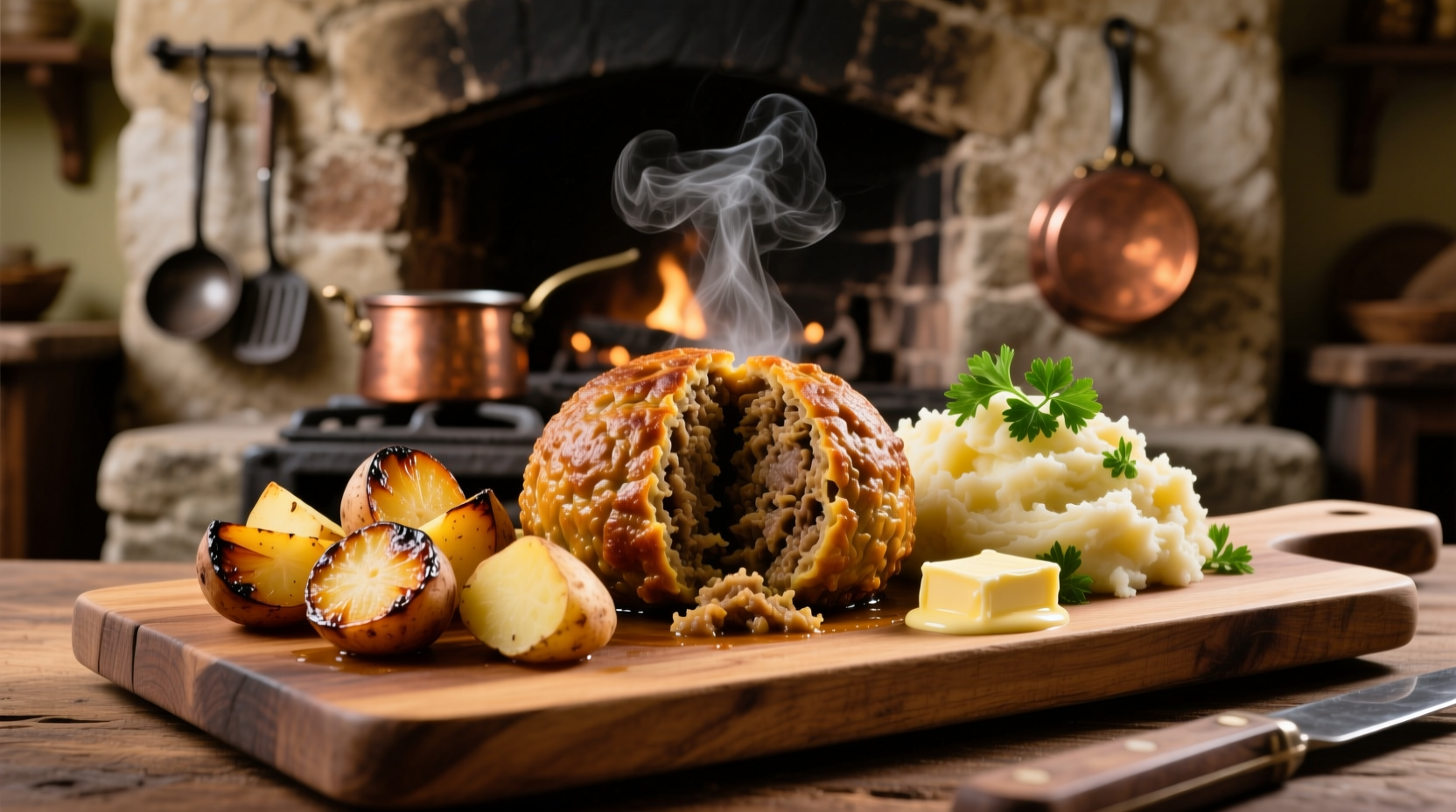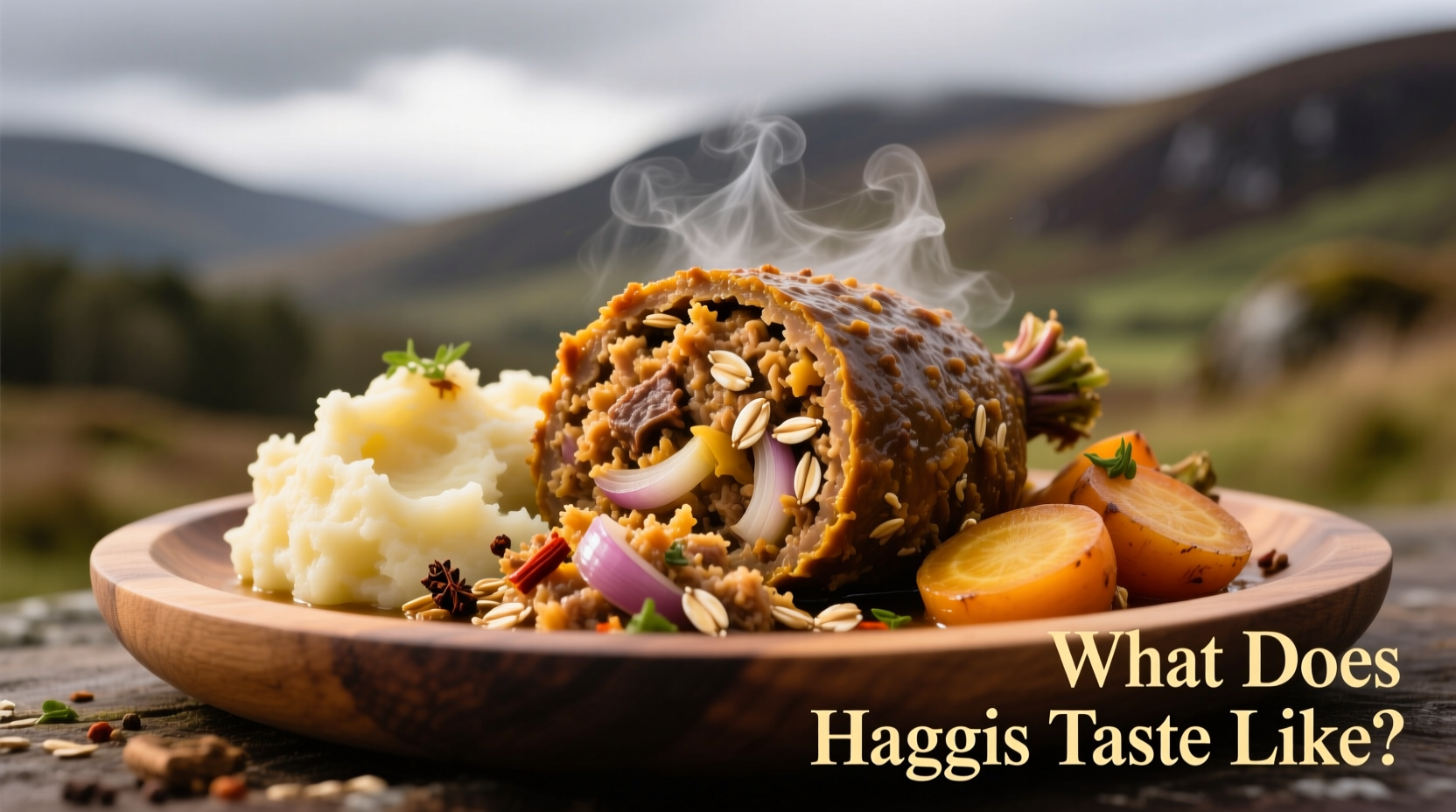If you've ever wondered what does haggis taste like but felt hesitant to try Scotland's national dish, you're not alone. Despite common misconceptions, authentic haggis delivers a surprisingly approachable flavor experience that has delighted palates for centuries. Let's explore exactly what to expect when you take that first bite.
Breaking Down Haggis' Flavor Profile
Understanding what haggis tastes like requires examining its sensory components separately. When properly prepared by skilled hands, haggis offers a complex yet balanced flavor experience:
Texture: The Foundation of the Experience
Authentic haggis has a distinctive texture that's crucial to its appeal. It's crumbly yet cohesive, with the oatmeal providing structure while the minced offal creates a moist, almost creamy mouthfeel. The texture resembles a well-seasoned meatloaf that's been gently steamed rather than baked dry. When cooked correctly, you shouldn't detect any stringy or tough elements—just a harmonious blend where no single ingredient dominates.
Primary Flavor Components
The flavor profile of traditional haggis can be described as:
- Savory meatiness from the sheep's heart, liver, and lungs
- Warm peppery notes from black pepper and sometimes allspice
- Subtle earthiness from the pinhead oatmeal
- Sweet onion undertones that balance the richness
- Rich umami depth from the slow cooking process
Contrary to popular belief, does haggis taste like liver? Only subtly. The liver contributes to the overall meaty richness but doesn't dominate when properly balanced with other ingredients and spices.
Why Haggis Tastes This Way: The Science Behind the Flavor
The distinctive taste of haggis comes from both its ingredients and preparation method. Traditional haggis combines sheep's offal (heart, liver, and lungs), minced fine and mixed with onion, oatmeal, suet, spices, and salt, then simmered slowly in a sheep's stomach (though modern versions often use synthetic casings).
The slow cooking process allows flavors to meld while the oatmeal absorbs the meat juices, creating that signature moist-but-crumble texture. The spices—primarily black pepper with hints of nutmeg or allspice—complement rather than mask the meat flavors. This careful balance explains why haggis tastes good to those who approach it with an open mind.
Haggis Myths vs Reality: Setting the Record Straight
Many misconceptions about haggis' taste stem from unfamiliarity with traditional preparation methods. Let's clarify with this fact comparison:
| Common Myth | Actual Reality |
|---|---|
| Haggis tastes overwhelmingly like organ meat | Properly prepared haggis has balanced flavors where no single ingredient dominates; the oatmeal and spices mellow the offal |
| It has a strange, off-putting texture | Authentic haggis has a crumbly yet moist texture similar to well-made stuffing or moist meatloaf |
| Only Scots enjoy haggis | Food critics worldwide praise quality haggis; The Guardian described it as "surprisingly delicious" while Anthony Bourdain called it "wonderful" |
| All haggis tastes the same | Quality varies dramatically; artisanal haggis from reputable butchers tastes significantly better than mass-produced versions |
How Preparation Affects What Haggis Tastes Like
The taste of haggis varies significantly based on preparation quality. Scotland's Food Standards Agency recognizes traditional haggis under the European Union's Traditional Speciality Guaranteed (TSG) scheme, which specifies:
- Must contain sheep's heart, liver, and lungs
- Oatmeal must be pinhead (not instant)
- Traditional spices include black pepper, salt, and sometimes onion powder
- No artificial additives or preservatives
When these standards are followed, you get haggis with a rich, complex flavor. Mass-produced versions often substitute cheaper ingredients, resulting in a bland or overly processed taste that doesn't represent authentic haggis flavor profile.
Best Ways to Experience Authentic Haggis Flavor
If you're curious about what does haggis taste like and want to try it properly, follow these recommendations:
Serving Suggestions That Enhance the Flavor
Traditionally served as part of a "neeps and tatties" platter (mashed turnips and potatoes), this combination balances haggis' richness perfectly. The slight sweetness of the turnips and earthiness of potatoes complement rather than compete with haggis' flavors.
For first-time tasters, consider these pairings that make haggis taste better:
- A splash of Scotch whisky in the serving sauce
- Freshly cracked black pepper on top
- A side of cranberry sauce for sweet contrast
- Mustard cream sauce for tangy balance
Where to Find the Best Haggis
According to the Royal Scottish Culinary Association, the most authentic haggis comes from:
- Local Scottish butchers using traditional recipes
- Restaurants specializing in Scottish cuisine
- Burns Night suppers (celebrated January 25th)
- Certified TSG haggis producers
Avoid supermarket varieties with long ingredient lists or artificial preservatives if you want to experience what real haggis tastes like.
Regional Variations and Modern Interpretations
While traditional Scottish haggis remains the gold standard, creative chefs have developed variations that alter the flavor profile:
- Veggie haggis: Uses pulses and mushrooms instead of meat, creating an earthier, less savory profile
- Game haggis: Made with venison or rabbit, offering a deeper, gamier flavor
- Seafood haggis: Incorporates fish or shellfish, resulting in a brinier taste
- Modern fusion haggis: May include unexpected spices like smoked paprika or chili
These variations demonstrate how the basic haggis concept can be adapted while maintaining its essential character. However, for understanding what traditional haggis tastes like, stick with the classic sheep's offal version.
First-Time Taster's Guide
If you're preparing to try haggis for the first time, manage your expectations properly. Approach it as you would any unfamiliar ethnic dish—with curiosity rather than preconceptions. Many first-timers report that haggis taste surprised them by being more approachable than expected.
The National Trust for Scotland notes that haggis has been part of Scottish cuisine since at least the 15th century, with recipes appearing in cookbooks as early as 1430. This longevity speaks to its genuine appeal beyond mere novelty.
When served properly—with attention to ingredient quality and traditional preparation—haggis delivers a satisfying, complex flavor experience that explains its enduring popularity. Rather than tasting like "sheep's insides," it offers a harmonious blend where the whole is greater than the sum of its parts.

Final Thoughts on Haggis Flavor
Understanding what does haggis taste like requires moving beyond the initial shock of its ingredients. When prepared traditionally, haggis offers a savory, peppery, and earthy flavor profile with a moist crumbly texture that many find surprisingly delicious. The key is finding quality haggis from reputable sources that honor the traditional preparation methods.
As with any traditional dish, the experience goes beyond mere taste—it's about connecting with centuries of culinary heritage. Next time you encounter haggis, approach it with an open mind, and you might discover why this Scottish staple has endured for generations.
Does haggis taste like liver?
Haggis contains liver but doesn't taste predominantly like liver when properly prepared. The liver contributes to the overall meaty richness but is balanced by oatmeal, onions, and spices, creating a more complex flavor profile than standalone liver.
Why does haggis taste good to some people?
Haggis tastes good because of its balanced flavor profile—savory meatiness from offal, earthiness from oatmeal, and warmth from spices create a harmonious blend. The slow cooking process develops deep umami flavors that many find satisfying and comforting.
What does vegetarian haggis taste like?
Vegetarian haggis has a similar texture to traditional haggis but with a different flavor profile. It's typically earthier and less savory, using mushrooms, lentils, or beans instead of meat, while maintaining the oatmeal base and traditional spices like black pepper.
How can I make haggis taste better?
To enhance haggis flavor, serve it with traditional neeps and tatties (mashed turnips and potatoes), add freshly cracked black pepper, include a splash of Scotch whisky in the serving sauce, and ensure you're using high-quality, traditionally prepared haggis from a reputable source.
Is haggis an acquired taste?
Many find haggis more approachable than expected. While the concept might seem challenging, the actual taste is often described as similar to well-seasoned meatloaf or stuffing. Quality matters significantly—authentic haggis from skilled producers is generally well-received even by first-time tasters.











 浙公网安备
33010002000092号
浙公网安备
33010002000092号 浙B2-20120091-4
浙B2-20120091-4